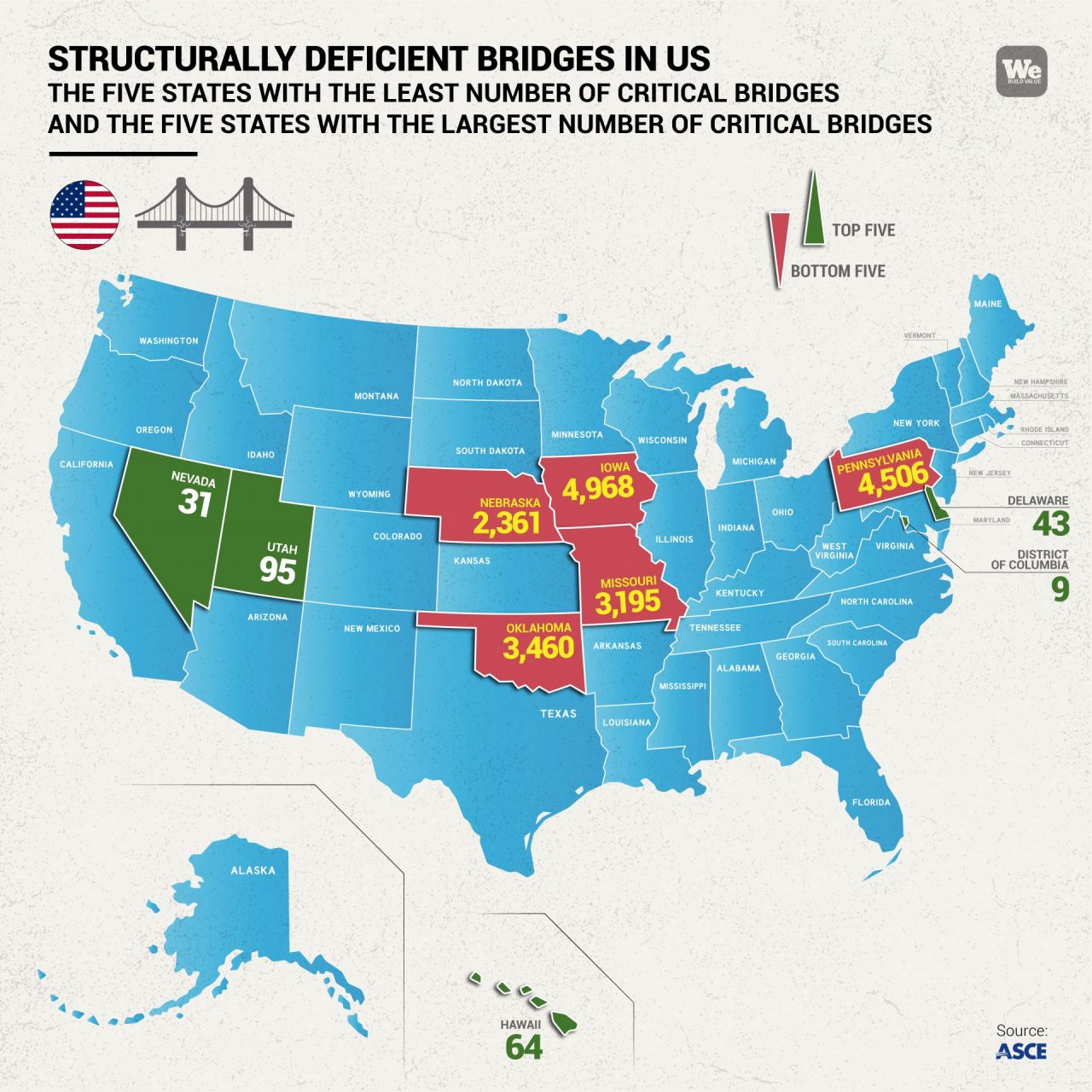American bridges: icons of history
From one state to another, you’ll find postcard-worthy icons, like the Smithfield Street Bridge in Pittsburgh, Pennsylvania, the first lattice bridge in the United States to use steel trusses. With well over a century of history behind it (1883), this structure has been renovated and expanded over the years. Then there’s the “Big Mac” or Mackinac Bridge, the 5-mile-long suspension bridge connecting the two peninsulas of the enormous Lake Michigan, nearly at the Canadian border. Or the majestic New River Gorge, found in the Appalachian Mountains of West Virginia, once the world’s longest span arch bridge and still the third highest in America.
Beautifully “covered” structures are also an integral part of the bridge design canon. It’s a category that has now become largely obsolete; for the most part, these bridges are historical sites closed to motor vehicle traffic. The Cataract Covered Bridge in Indiana, built in 1876 and retired in 2005, the Cornish-Windsor between New Hampshire and Vermont, the Sachs Bridge in Pennsylvania and the Silk Bridge in Vermont are some of the best-known examples.
The United States has the world’s largest collection of bridges and viaducts extending directly and completely into the sea, with a particularly high concentration in Florida. These bridges connect endless stretches of sand that are now both desirable residential areas and tourist destinations, from the Gulf of Mexico to the Atlantic Ocean. In all, Florida operates 12,355 bridges.
These structures have to be able to withstand tropical storms and hurricanes. The oldest is the famous Seven Mile Bridge, which connects Miami to the Keys, forming a man-made peninsula extending into the Caribbean. Originally a railway bridge, it dates from 1912. Seventy years later, it was completely replaced and transformed into a major motor vehicle road. For long stretches, the new bridge runs parallel to the old one, which pedestrians and cyclists now use in select stretches.
The Seven Mile is just the first in a long series of equally important and beautiful bridges. The expansive Tampa Bay, on the Gulf Coast, is home to a wide range of water crossings. It boasts the Sunshine Skyway Bridge, one of the most elegant bridges built in the US in recent history. Made of steel and reinforced concrete, and just over four miles long, it rises incrementally to allow ships to pass under its central portion.
The network of bridges and viaducts projecting into the bay gives the Sunshine Skyway a crucial role: the altitude of the bridge allows access by sea to Tampa-St. Petersburg. However, maritime traffic has changed since the construction of the new Panama Canal, completed in 2016 by a consortium of European builders led by the Webuild Group. The central portion of the Sunshine Skyway no longer meets the height regulations to allow transit of New Panamax commercial and cruise ships.
Tampa Bay does not meet the minimum 50-foot draught requirements for New Panamax; plans to make it comply with regulations have been shelved. For the time being, then, the Sunshine Skyway (a cable-stayed bridge from 1987) is not up for discussion, despite the barrier it poses to large ships.
The situation is different in Long Beach. With its 31 miles of waterfront, 10 piers, and 66 New Panamax cranes, it was one of the few U.S. ports to have prepared moorings deep enough for large ships from the beginning. Additionally, the old Gerald Desmond bridge could no longer sustain its levels of car traffic toward the port, which handles 37% of all U.S. sea trade when combined with its sister port of Los Angeles.



